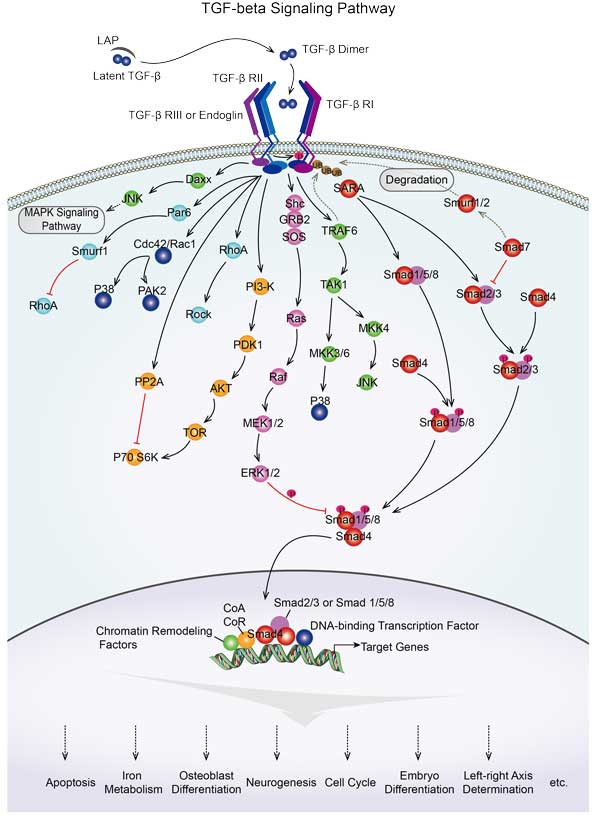TGFBR3
-
Official Full Name
transforming growth factor, beta receptor III -
Overview
This locus encodes the transforming growth factor (TGF)-beta type III receptor. The encoded receptor is a membrane proteoglycan that often functions as a co-receptor with other TGF-beta receptor superfamily members. Ectodomain shedding produces soluble TGFBR3, which may inhibit TGFB signaling. Decreased expression of this receptor has been observed in various cancers. Alternatively spliced transcript variants encoding different isoforms have been identified for this gene. -
Synonyms
TGFBR3;transforming growth factor, beta receptor III;transforming growth factor, beta receptor III (betaglycan, 300kDa);transforming growth factor beta receptor type 3;betaglycan;betaglycan proteoglycan;BGCAN;TGFR-3;TGF-beta receptor type 3;TGF-b
Recombinant Proteins
- Mouse
- Human
- Chicken
- Rat
- Human Cells
- HEK293
- Mammalian Cells
- Insect Cells
- E.coli
- His
- Avi
- Fc
- Non
- GST
Background
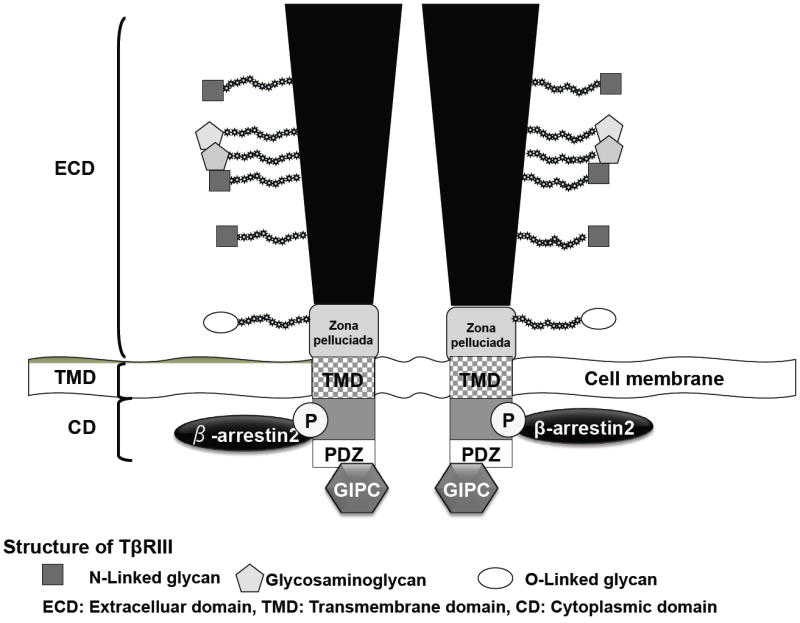
Fig1. TβRIII Structure. (Catherine E Gatza, 2010)
What is TGFBR3 protein?
TGFBR3 gene (transforming growth factor beta receptor 3) is a protein coding gene which situated on the short arm of chromosome 1 at locus 1p22. TGFBR3 is related to a larger family of proteins that play crucial roles in regulating cell growth, differentiation, and other processes. The TGF-β superfamily includes over 30 different ligands and their receptors. TGFBR3 is involved in modulating the signaling pathways initiated by TGF-β ligands. TGFBR3 is widely expressed in various tissues, including the heart, skeletal muscle, and the nervous system. Its expression can vary depending on the tissue type and developmental stage. TGFBR3 has been implicated in several developmental processes, including embryogenesis, where it plays a role in pattern formation and organogenesis. The TGFBR3 protein is consisted of 851 amino acids and TGFBR3 molecular weight is approximately 93.5 kDa.
What is the function of TGFBR3 protein?
TGFBR3 acts as a co-receptor for TGF-β ligands, modulating the binding and activity of the primary TGF-β receptors, such as TGFBR1 and TGFBR2. By affecting TGF-β signaling, TGFBR3 contributes to the control of cell proliferation, differentiation, and apoptosis. TGFBR3 plays a role in embryonic development, including processes like mesoderm formation and left-right axis determination. In some contexts, TGFBR3 may function as a tumor suppressor, limiting the growth of tumors by modulating TGF-β pathways that control cell cycle arrest and apoptosis. TGFBR3 is involved in cell adhesion processes and can influence the behavior of cells within the extracellular matrix. Studies have suggested a link between TGFBR3 and bone metabolism, with implications for conditions like osteoporosis.
TGFBR3 Related Signaling Pathway
TGFBR3 regulates signal transduction by enhancing the binding of TGF-β ligand to the signaling receptor TGFBR2. Activated signaling receptors further trigger a MAD-dependent pathway in which activated TGFBR1 phosphorylates Smad2 and Smad3, and these R-Smads then form complexes with Smad4 to enter the nucleus and regulate the expression of target genes. In addition, TGF-β signaling activates non-Smad pathways, such as MAPK, PI3K/Akt, and RhoA pathways, affecting cell behavior and gene expression. The role of TGFBR3 in signaling may depend on the cellular environment, and the signaling pathway interacts with other signaling pathways such as Wnt, Notch, and Hedgehog. The strict regulation of TGF-β signaling involves feedback mechanisms and the participation of TGFBR3 to ensure the timeliness and appropriateness of the signal.
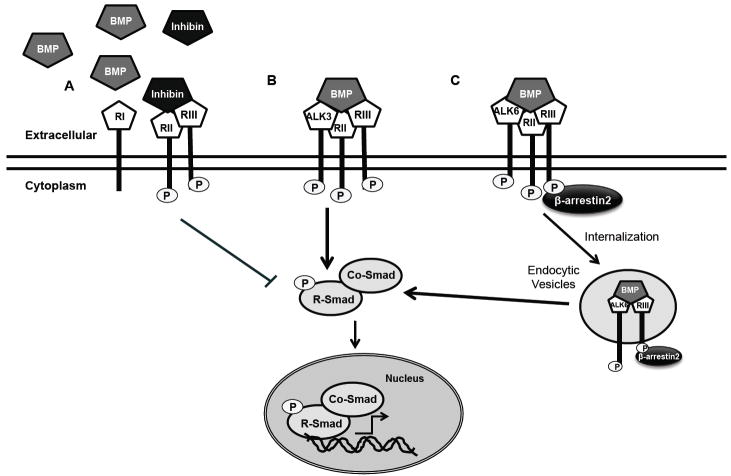
Fig1. TβRIII Regulates BMP Mediated Signaling. (Catherine E Gatza, 2010)
TGFBR3 Related Diseases
Tgfbr3-associated diseases involve multiple physiological and pathological processes whose abnormal expression or function may contribute to the development of the disease. For example, in some types of cancer, TGFBR3 may act as a tumor suppressor or promoter, affecting cell cycle control, cell migration, and aggressiveness, and thus be associated with tumor initiation, development, and metastasis. In addition, dysfunction of TGFBR3 has also been associated with cardiovascular diseases, such as atherosclerosis, and fibrotic diseases, including liver and kidney fibrosis, by regulating extracellular matrix deposition and immune response. TGFBR3 may also be associated with bone diseases such as osteoporosis, as it plays a role in regulating bone formation and absorption balance. In the nervous system, abnormalities in TGFBR3 may be associated with neurodegenerative diseases.
Bioapplications of TGFBR3
In the field of cancer therapy, interventions targeting TGFBR3 and its signaling pathway may help regulate cell behavior in the tumor microenvironment, including inhibiting tumor cell proliferation, migration, and invasion. In the treatment of fibrotic diseases, regulating the function of TGFBR3 may slow down or reverse the process of tissue fibrosis. In addition, the role of TGFBR3 in bone metabolism makes it also a concern in treatment strategies for osteoporosis and may help promote bone formation or inhibit bone resorption. In drug development, TGFBR3 can be used as a drug target to guide the design of new drugs to treat related diseases.
Case Study
Case Study 1: Rodolfo Daniel Cervantes-Villagrana, 2024
Given that betaglycan (BG, also known as type III TGFβ receptor or TGFBR3), a multi-faceted proteoglycan TGFβ co-receptor, can be found within the tumor microenvironment, researchers addressed its hypothetical role in oncogenic HGF signaling. They found that HGF/Met promotes lung cancer and endothelial cells migration via PI3K and mTOR. This effect was enhanced by recombinant soluble betaglycan (solBG) via a mechanism attributable to its glycosaminoglycan chains, as a mutant without them did not modulate HGF effects. Moreover, soluble betaglycan extended the effect of HGF-induced phosphorylation of Met, Akt, and Erk, and membrane recruitment of the RhoGEF P-Rex1.
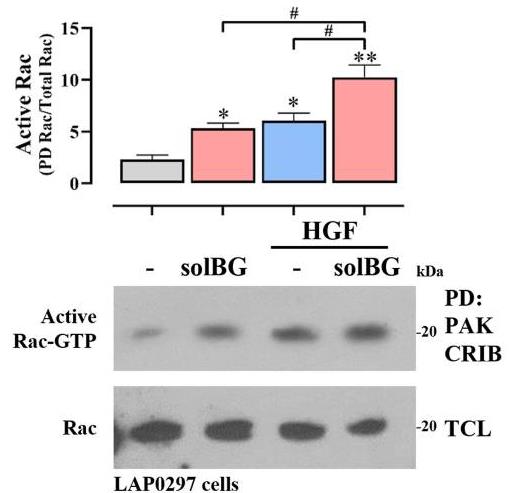
Fig1. Effect of solBG on Rac activation by HGF in LAP0297 lung cancer cells.
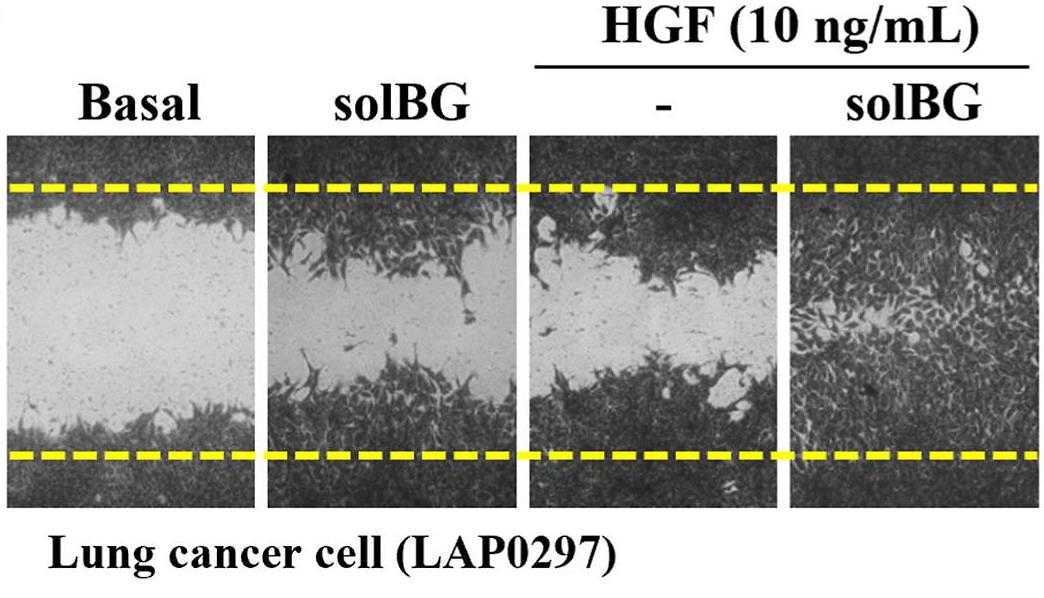
Fig2. Effect of solBG on cell migration of LAP0297 lung cancer cells.
Case Study 2: Valentín Mendoza, 2009
Betaglycan is a coreceptor for members of the transforming growth factor beta (TGF-beta) superfamily. Mutagenesis has identified two ligand binding regions, one at the membrane-distal and the other at the membrane-proximal half of the betaglycan ectodomain. Here researchers show that partial plasmin digestion of soluble betaglycan produces two proteolysis-resistant fragments of 45 and 55 kDa. Amino terminal sequencing indicates that the 45 and 55 kDa fragments correspond, respectively, to the membrane-distal and -proximal regions. The 45 and 55 kDa fragments, as well as their recombinant soluble counterparts, Sol Delta10 and Sol Delta11, bind TGF-beta, but nonetheless, compared to intact soluble betaglycan, have a severely diminished ability to block TGF-beta activity. Surface plasmon resonance (SPR) analysis indicates that soluble betaglycan has K(d)'s in the low nanomolar range for the three TGF-beta isoforms, while those for Sol Delta10 and Sol Delta11 are 1-2 orders of magnitude higher.
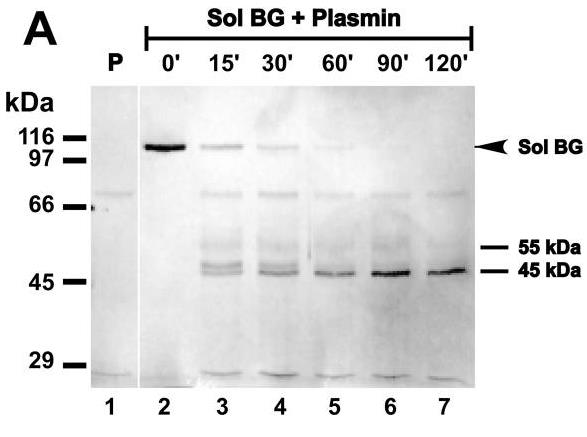
Fig3. Soluble betaglycan (Sol BG) was digested with limiting concentrations of plasmin and the resulting fragments (of 55 and 45 kDa) were analyzed.
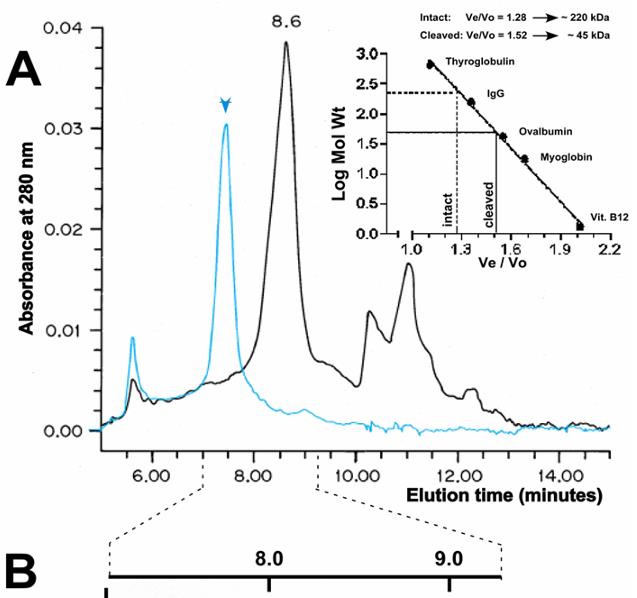
Fig4. HPLC gel filtration analysis of plasmin digested soluble betaglycan.
Quality Guarantee
.
.jpg)
Fig1. SDS-PAGE (Tgfbr3-297M)
.
.jpg)
Fig2. SDS-PAGE (Tgfbr3-298R)
Involved Pathway
TGFBR3 involved in several pathways and played different roles in them. We selected most pathways TGFBR3 participated on our site, such as TGF Beta Signaling Pathway,TGF-beta Receptor Signaling Pathway,TGF-beta receptor signaling, which may be useful for your reference. Also, other proteins which involved in the same pathway with TGFBR3 were listed below. Creative BioMart supplied nearly all the proteins listed, you can search them on our site.
| Pathway Name | Pathway Related Protein |
|---|---|
| TGF Beta Signaling Pathway | ZNF423,FST,LEFTY1,NOG,ENG,RUNX3,ZFP423,FOXH1 |
| TGF-beta receptor signaling | EIF2A,STRAP,DAB2 |
| TGF-beta Receptor Signaling Pathway | JUNBA,EID2,GIPC1,CITED1,DAB2,STK11IP,FOXH1,SKIA,VDRB,ENG |
Protein Function
TGFBR3 has several biochemical functions, for example, PDZ domain binding,SMAD binding,activin binding. Some of the functions are cooperated with other proteins, some of the functions could acted by TGFBR3 itself. We selected most functions TGFBR3 had, and list some proteins which have the same functions with TGFBR3. You can find most of the proteins on our site.
| Function | Related Protein |
|---|---|
| contributes_to transforming growth factor beta binding | ENG,TGFBR2,TGFBR1 |
| heparin binding | CCL7,BMP4,LPA,THBS1,BSPH1,THBS3,F11,SLIT3,SERPINC1,PTCH1 |
| activin binding | FKBP1A,FSTL3,FST,ACVRL1,SMAD7,ENG,ACVR2B,ACVR1,SMURF1 |
| transforming growth factor beta binding | ENG,ITGAV,HYAL2,TGFBR2,VASN,LTBP4,THBS1,LTBP1,CD109,ACVR1 |
| fibroblast growth factor binding | FGFBP3,FGFR2,FIBP,FIBPA,FGFR1,RPS2,GLG1,FGFR1A,KLB,HSPA9 |
| coreceptor activity | CXCR4,ZP2,CD8A,CXCR7,ACVR2A,CCR8,IGSF1,CD28,RGMA,CD4 |
| transforming growth factor beta-activated receptor activity | TGFBR1,BMPR2B,BMPR2A,TGFBR2,ENG,ACVRL1,LTBP1 |
| PDZ domain binding | GNG5,LIN7B,GRIA1,ATP2B4,KIDINS220,PROSAPIP1,PARK2,SNTB1,GRASP,KCNJ4 |
| glycosaminoglycan binding | BGN,SPOCK2,SERPINA5,NDNF,TGFBR2,EPYC,DCN,SPOCK3,VCAN,EGFLAM |
Interacting Protein
TGFBR3 has direct interactions with proteins and molecules. Those interactions were detected by several methods such as yeast two hybrid, co-IP, pull-down and so on. We selected proteins and molecules interacted with TGFBR3 here. Most of them are supplied by our site. Hope this information will be useful for your research of TGFBR3.
GIPC1;TGFB1;TGFB3;cutF
TGFBR3 Related Signal Pathway
Resources
Gene Families
Research Area
Related Services
Related Products
References


